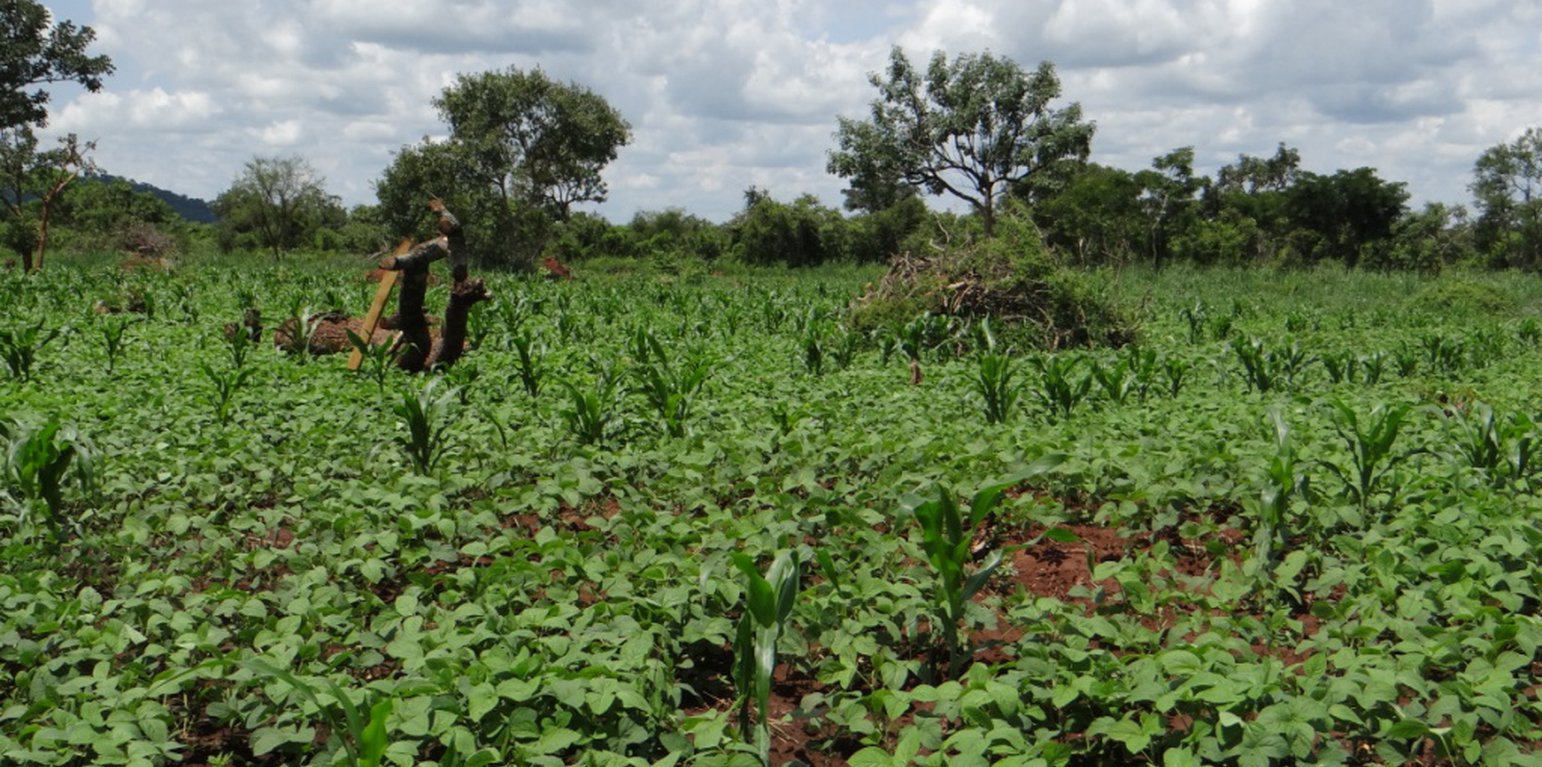



Inter cropping is a practice where farmers cultivate two different crops in the same field. Usually, a leguminous crop (Soybean) is planted with a non-leguminous crop (Maize). The leguminous crop helps to fix nitrogen in to the soil; produce nitrogen generated from the decomposition of the rich crop residues, and adds nutrient to the soil. This in turn reduces the net demand for fertilizers based on nitrogen. The farmer planted soybean variety Maksoya 3N with a yield potential of 3,500 kg/ha; at a spacing of 10cm × 30cm with 2 seeds per hole and at a seed rate of 20 - 25 kg/acre. Longe 7H Maize variety was then sparsely inter-planted at a spacing of 30cm x 10m with 3 seeds per hole; in between the soybean.
Intercropping Maize and soybean is particularly important because soybean is mainly a cash crop and thus act as a source of income while the maize provides food for the household. If one crop fails, the other may survive hence acts as insurance against crop failure. Planting two crops in a field also reduces the workload associated with cultivating each crop in separate fields. The root systems of the two crops are at different soil layers hence competition for nutrients and water is minimal.
A good intercrop has the main crop and the minor crop. The main crop usually has the recommended seed rate of mono crop while the minor crop may be planted depending on its relative importance and effect on the main crop. However, in intercropping system, the yield potentials of each of the crops is realized.
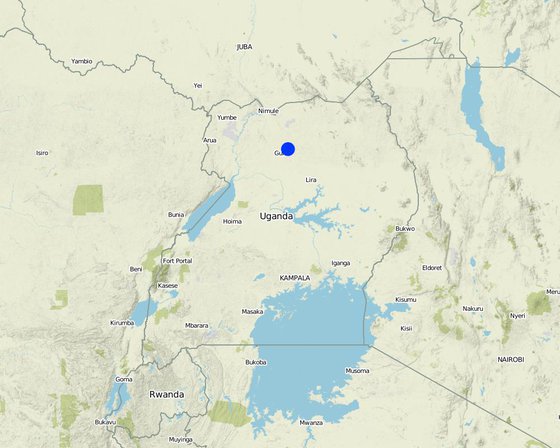
Местоположение: Gulu District, Northern Region,Uganda, Уганда
Число исследованных участков, где применяется Технология: отдельный участок
Пространственное распространение Технологии: примененяется точечно/ на небольших участках
На постоянно охраняемой территории?:
Продолжительность применения Технологии: 2014; менее 10 лет назад (недавняя)
Тип внедрения/ применения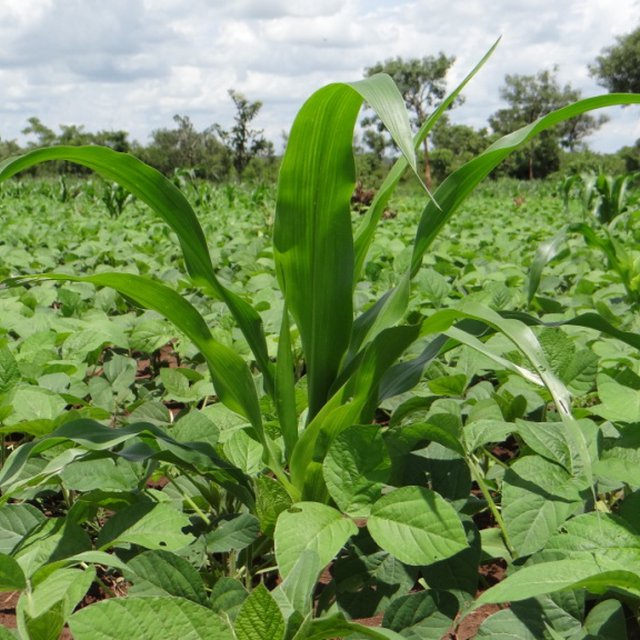






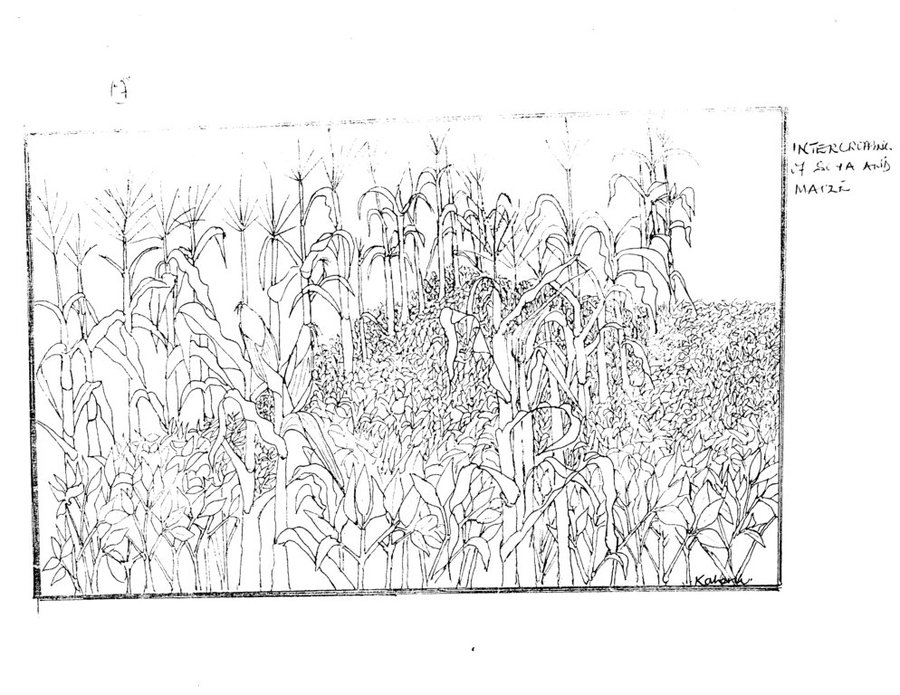
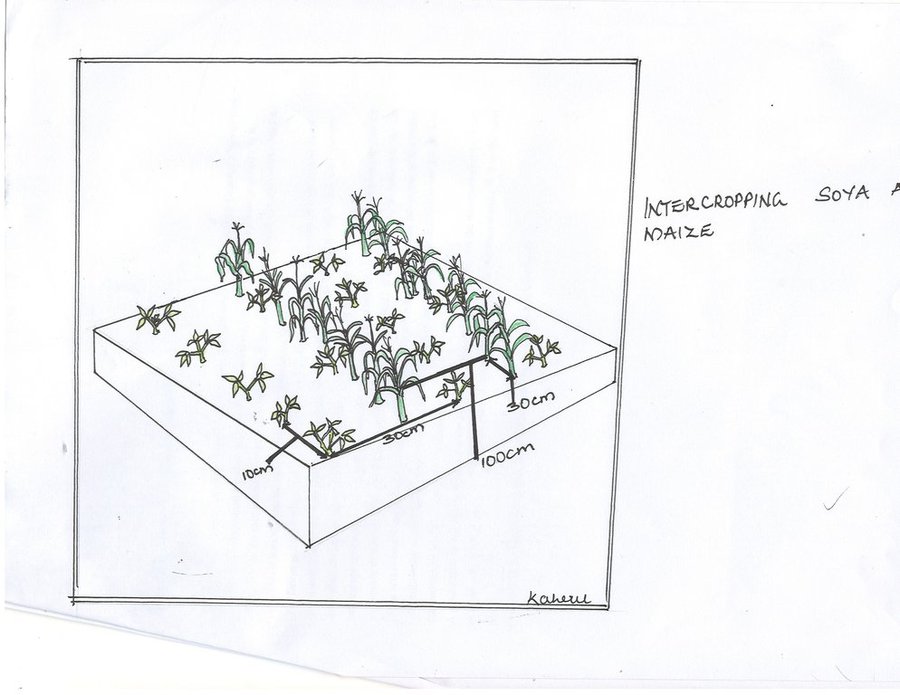
| Опишите затраты | Единица | Количество | Затраты на единицу (UGX) | Общая стоимость на единицу (UGX) | % затрат, оплаченных землепользователями |
| Оплата труда | |||||
| Labour for planting land | persons | 5,0 | 5000,0 | 25000,0 | 100,0 |
| labour for applying seed | Persons | 5,0 | 5000,0 | 25000,0 | 100,0 |
| Оборудование | |||||
| Hoe | Pieces | 4,0 | 10000,0 | 40000,0 | 100,0 |
| Watering can | Pieces | 4,0 | 100000,0 | 400000,0 | 100,0 |
| Slasher | Pieces | 3,0 | 7000,0 | 21000,0 | 100,0 |
| Посадочный материал | |||||
| Soya bean | kgs | 120,0 | 2500,0 | 300000,0 | 100,0 |
| Maize seeds | kgs | 5,0 | 2000,0 | 10000,0 | 100,0 |
| Общая стоимость запуска Технологии | 821'000.0 | ||||
| Опишите затраты | Единица | Количество | Затраты на единицу (UGX) | Общая стоимость на единицу (UGX) | % затрат, оплаченных землепользователями |
| Оплата труда | |||||
| labour | Persons | 10,0 | 5000,0 | 50000,0 | 100,0 |
| Общая стоимость поддержания Технологии | 50'000.0 | ||||
Количество до применения УЗП : 0.5 bag
Количество после применения УЗП: 3 bags
Increased yield from soya and maize compared to before the technology.
Crops grow vigorously, good pod filling.
In case of one crop failure the other crop the other crop survives.
Количество до применения УЗП : 1 crop
Количество после применения УЗП: 2 crops
More than one crop in the field.
Due to intercropping.
especially on seeds and labour
Maize stalks and soya wastes are left in the garden to provide mulch after decomposition.
The leguminous crop helps to fix nitrogen into the soil; produce nitrogen generated from the decomposition of the rich crop residues, and adds nutrient to the soil.